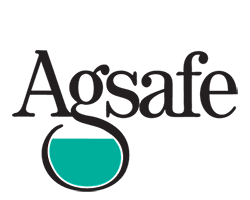Ever wondered what happens to unwanted agvet chemicals when ChemClear collects them?
When landholders commit to safe disposal of unwanted agvet chemicals, they start the ball rolling by taking an inventory and booking unwanted product, which they deliver to the ChemClear truck at a council waste depot.
Once those registered chemicals are delivered, they’re checked and loaded by the Toxfree team entrusted to transport the waste, and the obsolete products are carted off into the sunset.
Out of sight, out of mind right? Not quite.
We travelled to the Toxfree waste recycling depot at Laverton, Victoria, to find out what happens to waste farm chemicals after they’re collected.
Greg Laurence is site manager of the 5ha depot dedicated to reusing waste through the recycling chain.
A chemist by profession, Greg is clearly pleased with the work Toxfree does in changing consumer attitudes to waste.
“I’ve worked in this industry for 15 years, coming in straight out of university after studying my chemistry degree. I worked in the warehouse sorting and treating chemicals and eventually worked my way up to managing the site,” said Greg.
“I’m proud of what we do here and I love it because we’re making a difference to our environment.”
The logistics of managing such a huge site, which processes large quantities of recyclable waste, are enormous.
Since ChemClear’s first collection in 2003, Toxfree have processed a whopping 587 tonnes of unwanted agvet chemical product, and diverted 31,234 agvet containers to plastic recycling, while only last month, Queenslanders surrendered 40 tonnes of product for safe disposal.
Toxfree South East Regional Manager, Jason Cran, said Agsafe had set a high standard with its ChemClear program.
“This voluntary program is greatly respected for its environmentally sustainable outcomes,” Jason said.
“The unwanted chemicals represent the end of a journey for the farming community, but they are just the beginning for us and the alternate fuel sources we produce secures the health of our environment.”
The secret to correct treatment of chemical waste starts with product testing by a team of onsite chemists.
Agvet chemicals are transported from across Australia to Toxfree’s Melbourne depot, safely stored in metal, bunded bins and the chemistry team group like-with-like before decanting similar products into vats for processing through a fuel blending treatment, breaking complex chemicals down into simple, safer components.
A calorific value exists in agvet chemicals, which are mixed with other flammable wastes collected from industry such as paint and solvents, then blended into an alternate fuel for use in cement kilns.
But it’s the organochlorine pesticides, cyanide and arsenic products that get the VIP treatment.
In addition to chlorofluorocarbons (CFCs), toxic products are treated by a plasma arc: an innocuous-looking metal structure evocative of a 1950s sci-fi movie, but wielding some mighty 21st-century power.
Small amounts of product are loaded into the arc and heated to 10,000 degrees: that’s almost three times hotter than the sun, which burns at 3,500 degrees.
The process obliterates complex molecules, turning them into basic carbon, rendering the final product safer for disposal.
Lisa Nixon, ChemClear National Program Manager, said the long-term relationship with Toxfree ensures Australian farmers had access to an environmentally-sound farm waste program.
“The team at Toxfree are professional partners and together we are able to deliver on large scale, geographically challenging collection projects time and time again,” Lisa said.
It’s not only agvet chemicals that get the safe recycling treatment: medical and laboratory waste, paint, lightbulbs, dry cleaning fluid and motor oil containers are just some of the waste products that can be reused.
Phosphorous, mercury and aluminum from light bulbs are separated and sent offsite for remanufacture, while dry cleaning fluid is separated from dirt, lint and fluff before it is returned clean for reuse.
Paint cans, whether full, partially full or empty, are sorted by their packaging type, metal and plastic and loaded into the HazPak, which reduces an impressive 400kg of paint cans into 2.5 bricks weighing approximately 30kg each, which are sent off to metal and plastic recyclers, while the paint contents are captured and blended into alternate fuel.
Register at chemclear.org.au.

